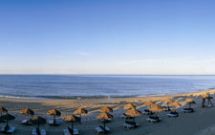Muralhas de Faro
Muralhas de Faro
Monuments
The current urban layout of Faro provides an understanding of where the walls that protected the city used to be. They form a core known as Vila-Adentro (Inner Town), which contains the city´s historical quarter.
The initial idea of protecting the settlement is owed to Ben Bekr, a 9th century Muslim prince from the small, local kingdom. It was then the Porta Árabe (Arab Gateway) was built and which can still be found in the Arco da Vila (Town Archway). After the 12th century Almohade invasion, two watchtowers were built to strengthen the defences. These currently form part of the Arco do Repouso (Archway of Rest).
In the 17th century, following the Restoration of Independence and Portuguese government in 1640, the tower battlements were flattened to keep up with the latest ballistic developments and a second line of walls was built facing the sea.
After the city´s destruction in the 1755 earthquake and their loss of importance for military defence, the walls were progressively integrated into new buildings and there are currently only some defensive features remaining.
The initial idea of protecting the settlement is owed to Ben Bekr, a 9th century Muslim prince from the small, local kingdom. It was then the Porta Árabe (Arab Gateway) was built and which can still be found in the Arco da Vila (Town Archway). After the 12th century Almohade invasion, two watchtowers were built to strengthen the defences. These currently form part of the Arco do Repouso (Archway of Rest).
In the 17th century, following the Restoration of Independence and Portuguese government in 1640, the tower battlements were flattened to keep up with the latest ballistic developments and a second line of walls was built facing the sea.
After the city´s destruction in the 1755 earthquake and their loss of importance for military defence, the walls were progressively integrated into new buildings and there are currently only some defensive features remaining.




 Explore
Explore 
 Remember and Share
Remember and Share 


